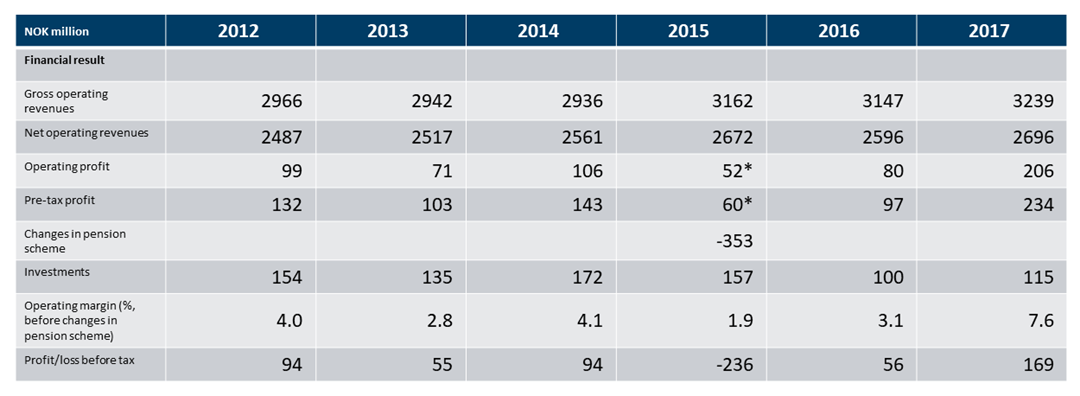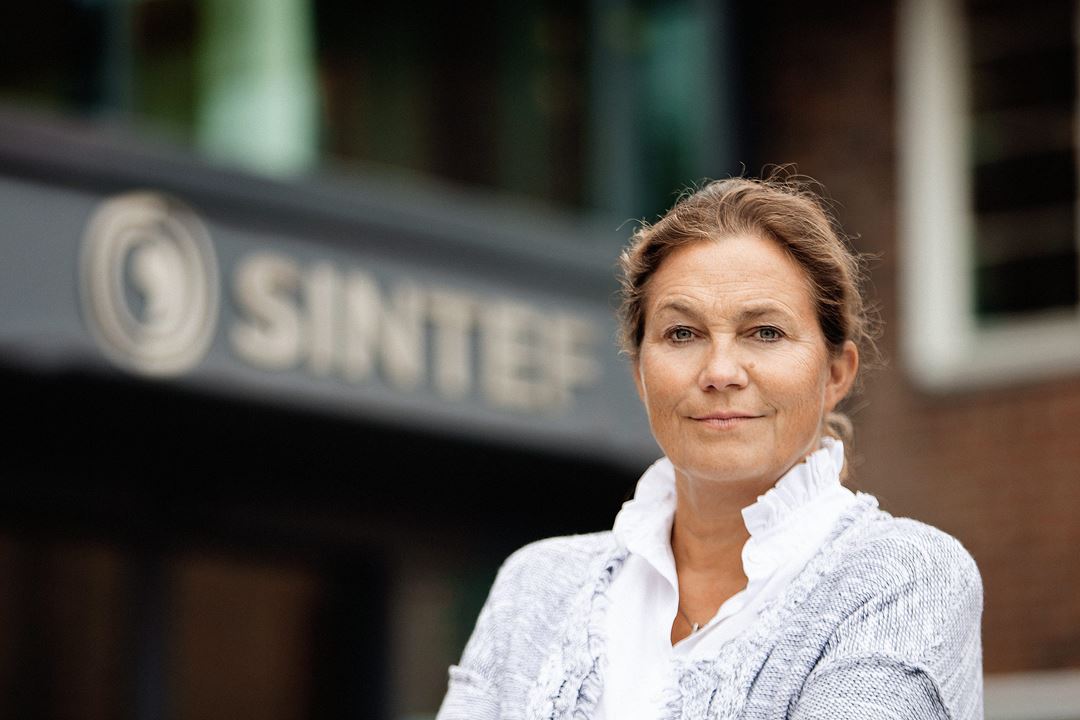Gross operating revenue was NOK 3.24 billion. The ordinary operating profit was NOK 206 million, compared with NOK 97 million in 2016. NOK 44 million of this profit is a one-time effect resulting from the reimbursement of previous allocation linked to EU projects.
The result gives a net operating margin of 7.6 per cent. If one-time effects are excluded, the net operating margin is 6.0 per cent.
"I am very pleased with SINTEF's financial result for 2017", says Alexandra Bech Gjørv, SINTEF's Chief Executive Officer. "Our employees have made a great effort to improve earnings following several difficult years. We are now undergoing a strategic process in which we are prioritising important multidisciplinary areas of focus where SINTEF can make major contributions to the restructuring of Norwegian industry. We are intensifying our efforts to commercialise research results, which is a capital intensive activity. Moreover, resources will be needed to follow the campus development plans of our close university partners in Trondheim and Oslo. The positive results in 2017 are thus not only very welcome, but also essential if we are to realise our vision of 'Technology for a Better Society'", she says.
The SINTEF Foundation invests its profits in new research. In 2017, NOK 115 million was invested in laboratories, scientific equipment and other business assets. In the last ten years, SINTEF has invested at least NOK 1.3 billion.
The company's financial position is robust. As of 31 December 2017, SINTEF's equity amounts to NOK 2,348 million, which constitutes 57 per cent of its total capital. This capital is mainly invested in the ownership of our research companies and in laboratories and property linked to research activities.
Substantial restructuring
In the last three years, SINTEF has undergone a substantial restructuring, implementing measures to increase sales and reduce costs. Cost reduction measures in the period 2015-2017 have resulted in combined annual savings of NOK 300 million.
Since 2014, SINTEF's sales linked to the oil and gas industry have fallen by at least 20 per cent. This revenue loss has been compensated for by increased revenue in other fields, such as building and construction, aquaculture, renewable energy and process industry.
Substantial changes have also been made to SINTEF's corporate organisation. From 1 January 2017, ocean space research activities have been consolidated in SINTEF Ocean AS, and the SINTEF Industry institute was founded on 1 January 2018. SINTEF Industry consolidates research activities focusing on the manufacturing and oil and gas industries, and with 465 employees it is SINTEF's largest institute. The Tel-Tek research foundation in the Grenland region of southern Norway was incorporated into SINTEF in November 2017. SINTEF now has its own operating locations in Trondheim, Oslo, Raufoss, Tromsø, Porsgrunn, Bergen, Mo i Rana, Ålesund, Hirtshals and Brussels.
Clients
During 2017, SINTEF worked on 5,691 projects for 3,707 small and large clients. 47 per cent of our gross operating revenues originated directly from contracts with Norwegian and international trade and industry, while 10 per cent came from public sector clients. Only 7 per cent of SINTEF's revenue comes from public sector grants. This is a far lower level of public funding than is the case for corresponding institutes in the rest of Europe.
International sales amounted to NOK 449 million. Fourteen per cent of SINTEF's operating revenues were generated by international projects. In 2017 SINTEF had clients in 59 countries worldwide, and EU-funded projects constituted about 50 per cent of international sales.
Participation in large, long-term research centres which are partly financed by government, entails significant interaction with Norwegian and international clients. SINTEF is currently participating in nine Centres for Research-Based Innovation (CRIs) and eight Centres for Environment-Friendly Energy Research (CEERs) which were established in 2016 and 2017. In total, these centres involve over 200 industrial enterprises of various sizes.
Robust scientific and technical results
The number of publications and citations linked to the work of SINTEF research scientists increased in 2017. SINTEF implements a large number of projects associated with the Research Council of Norway's industry-oriented programmes. In 2017, SINTEF participated in 435 applications for funding, of which 33 per cent were successful, and worth a total of NOK 690 million to SINTEF.
SINTEF is by far the largest Norwegian participant in the EU's Framework Programme for Research and Innovation. As of March 2018, SINTEF has been granted participation in 147 projects linked to the EU's Framework Programme, Horizon 2020, involving funding from the EU amounting to EUR 99 million.
During 2017, SINTEF Raufoss Manufacturing and the Raufoss industrial cluster were also incorporated in SIVA's new Catapult scheme, which will promote the establishment and development of national centres in which companies can test, simulate and visualise technologies, components, products, services and processes. In November, NCE Raufoss was recognised as a "change driver in Norwegian industry", symbolising a new aspect of Innovation Norway's cluster programme.
Commercialisation
The company SINTEF TTO commercialises research results by facilitating the establishment and development of new companies, patenting processes and the licensing of technology. By the end of 2017, SINTEF had 15 start-up companies in its portfolio, which during the year have received a total of NOK 32 million from the SINTEF Venture funds. These companies have received a total of NOK 107 million in 2017 from SINTEF, other investors and state funding.
In 2018, SINTEF will establish a new venture capital fund, SINTEF Venture V, in collaboration with other private investors and the European Investment Fund.
Personnel
At the turn of the year SINTEF had 1,916 employees. 56 per cent of the research scientists at SINTEF have a Ph.D degree. The proportion of women among our research scientists is 29 per cent, and 37 per cent among managerial personnel.
Twenty-three per cent (436) of SINTEF's employees come from a total of 75 countries outside Norway. SINTEF's foreign employees provide a valuable source of scientific and cultural expertise. The majority of employees from outside Norway are from Germany and France.
Outlook
Digitalisation, automation, artificial intelligence, new materials and advanced robotic technology are causing enormous changes in all aspects of social and working life. SINTEF possesses high levels of skills and expertise in these fields, and aims to make an active contribution towards the development of effective infrastructures in society and competitiveness in the business sector.
One of SINTEF's greatest strengths is its ability to provide unique multidisciplinary expertise and offer independent advice to the public authorities and business sector about their opportunities with regard to making use of technological developments.
Putting into operation the principle of "One SINTEF" is of crucial importance in the development of a revised strategy that will be developed during 2018. This work focuses on multidisciplinary research, development and innovation in fields such as industry, energy, climate and environment, health and welfare, transport, digitalisation, public safety, food production, working environment and productivity.
Financial key figures for the SINTEF 2012-2017



